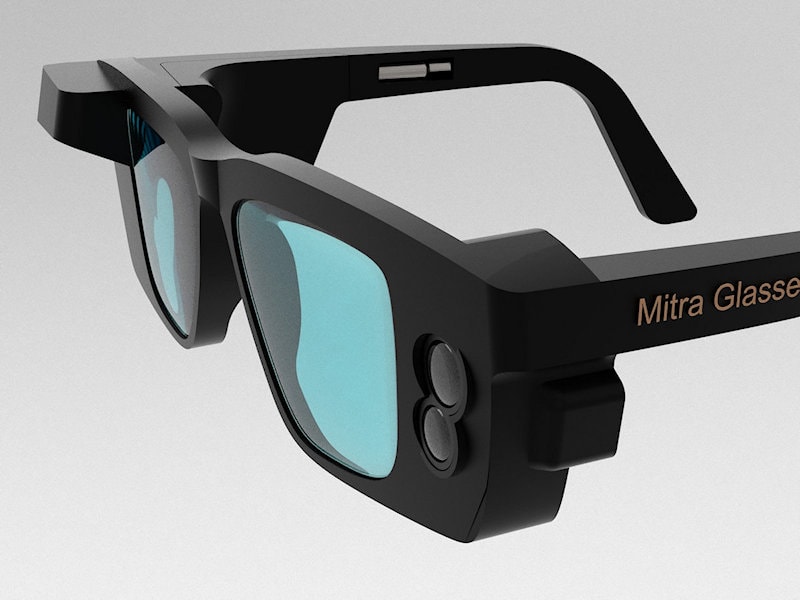Discover Advanced Assistive Devices for Individuals With Aesthetic Disabilities
The landscape of assistive innovation for people with aesthetic disabilities is advancing rapidly, presenting a range of innovative tools that boost freedom and engagement. From smart glasses that effortlessly combine aesthetic input with acoustic assistance to advanced navigating applications that redefine spatial recognition, these devices are improving possibilities.
Smart Glasses Innovations
Smart glasses represent a significant innovation in assistive modern technology for people with visual impairments. These innovative tools incorporate different functions developed to boost the customer's interaction with their environment. Outfitted with cams and sensors, wise glasses can capture real-time aesthetic info, which is then refined and communicated to the user via sound feedback or haptic experiences. This functionality permits people to receive prompt descriptions of their environments, enhancing their ability to involve and navigate with the globe.
Furthermore, advancements in expert system have actually additionally improved the abilities of smart glasses. Artificial intelligence formulas can acknowledge faces, reviewed text, and identify objects, making them important devices for day-to-day jobs. Individuals can get auditory signs that give context about their environment, fostering freedom and self-confidence.
Additionally, the ergonomic layout and lightweight nature of many clever glasses make them suitable for long term use, making sure comfort while enhancing capability. As these devices continue to develop, they hold the prospective to change the way individuals with aesthetic problems experience their day-to-days live, bridging the gap between accessibility and innovation. The recurring research and development in this field assurance to expand the opportunities for wise glasses, making them an essential component of modern assistive gadgets.
Navigating Apps and Tools
Numerous navigation apps and devices have emerged as important resources for individuals with aesthetic problems, dramatically boosting their ability to go across strange atmospheres. These modern technologies utilize general practitioner functionality, audio hints, and real-time information to provide individuals with specific navigating support.
One prominent example is the Aira application, which connects individuals to trained agents that can provide visual summaries of environments and navigating guidance via a real-time video clip feed. This service improves the customer's spatial awareness and confidence while navigating. One more notable tool is Seeing Eye GPS, which uses voice-guided navigating and factors of rate of interest, enabling users to accessibility important information concerning their environments.

As modern technology continues to advance, the growth of a lot more advanced navigation tools guarantees to further encourage people with visual impairments, assisting in seamless flexibility and assimilation into diverse environments. Such developments contribute in promoting a more comprehensive culture.
Braille Technology Advancements
Recently, advancements in Braille innovation have significantly transformed how people with aesthetic impairments access information and engage with the world around them. The advancement of portable Braille screens has actually reinvented analysis by permitting users to attach wirelessly to computer systems, smart devices, and tablet computers. These tools transform text into Braille in real-time, enabling smooth interaction with digital material.
Additionally, innovative Braille printers have emerged, enhancing the production of responsive materials. Modern embossers are faster and more reliable, permitting the quick development of Braille records and instructional products. This performance reduces the time and cost associated with creating Braille resources, making them more easily accessible to companies and schools.
Furthermore, the combination of Braille with various other innovations, such as expert system and maker discovering, has actually opened up brand-new opportunities informative post for individualized learning experiences. Voice acknowledgment and synthesis innovations can match Braille, giving an inclusive approach to info dissemination.
As the need for comprehensive education and office settings grows, these technical improvements play a vital role in encouraging people with visual problems, guaranteeing they have equal accessibility to information and opportunities in numerous elements of life.
Wearable Devices for Self-reliance
A growing variety of wearable devices is boosting self-reliance for people with visual disabilities, using cutting-edge services that boost navigation and everyday living. Braille displays and notetakers. These gadgets utilize advanced technologies to offer real-time responses and assistance, promoting freedom in numerous environments

Wearable modern technology additionally includes smartwatches that can be configured with accessibility features, allowing customers to obtain alerts, track their places, and even ask for aid with the touch of a switch. Some devices integrate man-made intelligence to evaluate the atmosphere, offering sound summaries of neighboring things or people.
Voice-Activated Assistive Solutions
Leveraging voice-activated assistive solutions has transformed the landscape of assistance for people with aesthetic problems, giving hands-free interaction and access to a range of tasks. These innovations utilize natural language processing and synthetic intelligence to allow individuals to carry out day-to-day tasks via straightforward voice commands.

Moreover, current innovations in voice acknowledgment precision have actually boosted the user experience dramatically, fitting diverse accents and speech patterns. This inclusivity guarantees that even more people can benefit from these innovations, promoting a greater feeling of autonomy.
Conclusion
Finally, the growth of advanced assistive devices significantly boosts the self-reliance and lifestyle for individuals with visual problems. Innovations such as clever glasses, navigating applications, you can look here Braille technology, wearable devices, and voice-activated services jointly foster a more comprehensive setting. These technologies empower customers to navigate their surroundings with self-confidence and engage even more completely with the world, ultimately promoting greater ease of access and equal possibilities for people facing aesthetic difficulties.
The landscape of assistive modern technology for people with aesthetic impairments is advancing rapidly, offering a range of ingenious tools that enhance autonomy and engagement.Smart glasses represent a substantial advancement in assistive modern technology for individuals with aesthetic disabilities. As these gadgets proceed to develop, they hold the potential to change the method individuals with aesthetic impairments experience their day-to-day lives, linking the space between availability and technology.In current years, advancements in Braille innovation have actually significantly transformed how people with aesthetic optometrist surgeon disabilities accessibility information and engage with the globe around them. These technologies equip individuals to navigate their surroundings with self-confidence and engage even more fully with the world, eventually advertising greater availability and equal chances for people facing visual obstacles.